I want to apply a translate animation on an Android view (button) using a custom interpolator where the easing function is:
public static float easeOut(float t,float b , float c, float d) {
if ((t/=d) < (1/2.75f)) {
return c*(7.5625f*t*t) + b;
} else if (t < (2/2.75f)) {
return c*(7.5625f*(t-=(1.5f/2.75f))*t + .75f) + b;
} else if (t < (2.5/2.75)) {
return c*(7.5625f*(t-=(2.25f/2.75f))*t + .9375f) + b;
} else {
return c*(7.5625f*(t-=(2.625f/2.75f))*t + .984375f) + b;
}
}
I have an example that uses the custom interpolator like this:
The interpolator is:
public class HesitateInterpolator implements Interpolator {
public HesitateInterpolator() {
}
public float getInterpolation(float t) {
float x = 2.0f * t - 1.0f;
return 0.5f * (x * x * x + 1.0f);
}
}
and is used like this:
ScaleAnimation anim = new ScaleAnimation(0.0f, 1.0f, 0.0f, 1.0f);
anim.setInterpolator(new HesitateInterpolator());
My question is:
What are these values b, c, d for?

